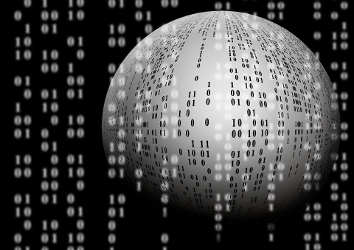I wrote this article to help you remove LNK Virus (¿ìѹ.lnk). This LNK Virus (¿ìѹ.lnk) removal guide works for all Windows versions.
¿ìѹ.lnk is a Trojan infection. The .lnk file format is used by the Windows operating system to give quick access to directories and programs. In other words, this is the shortcut format. Per definition, Trojan horses are malicious tools which pretend to be reliable. In many cases, they are presented as system applications.
¿ìѹ.lnk can inflict damage on your system, use your device to launch remote attacks on other machines and record sensitive information from your web browsers. The aftermath from the activity of the virus can range from technical errors to legal issues.
¿ìѹ.lnk works through background processes which makes it difficult to detect. You may not realize that the Trojan is present on your computer for a while. The only symptoms for the presence of the furtive program are disturbances in the system’s performance. Your computer will become sluggish, start displaying error messages, freeze and crash. If such behavior has been evident for some time, launch your Task Manager to do some research. Look up the names of all unfamiliar processes. It is commonplace for Trojans to give their tasks misleading names. A malicious process can sound like a legitimate system task.
¿ìѹ.lnk uses infected computers to launch remote attacks on other devices. The sinister program can turn your machine into a botnet. This term refers to a computer which can target devices, located in different parts of the world. There may or may not be a connection between the targeted objects. The purpose of a botnet is to penetrate a large number of machines. Attacks are made to infect computer systems with malware and steal valuable information from their hard drives. ¿ìѹ.lnk can distribute ransomware, rootkits, exploit kits, worms and other types of computer viruses.
Large scale attacks are investigated. The devices used to conduct them could be identified. If your computer is linked to a botnet attack, you could be investigated as a potential perpetrator. Separate countries have different laws regarding cyber crime. Some countries have accepted laws which hold people responsible for the devices they own. You can be charged for negligence even if you are not linked to the scheme. In this day and age, using all sources of information is not only a convenience, but also a necessity. Keep yourself updated on your country’s national laws regarding the fair use of information technologies and the Internet.
The direct threat around ¿ìѹ.lnk pertains to personal security. The clandestine program can record different kinds of details from the infected device. This starts from the system’s type and version, the web browsers in use and their build. This data may just be statistic, but it gives the developers of the Trojan information about your system’s specifications. This, in turn, reveals the vulnerable areas, as every build of the Windows OS and each web browser has different vulnerabilities.
Speaking of the web browser, this is a major target for Trojan infections. ¿ìѹ.lnk will penetrate all clients you have installed to your computer and collect the input you have entered into them. The malevolent program will record your history, tracking cookies, keystrokes, IP address, geographic location, postal code, physical registration, user names, passwords and other sensitive details. The owners of the Trojan can use your private information to hack your accounts and even register fake accounts under your name. They can also sell the gathered data without your knowledge or consent.
There are a few ways to contact ¿ìѹ.lnk. The Trojan can travel in a bundle with another application, like a pirated utility or a freeware tool. To prevent malware from penetrating your machine this way, stick to confirmed software and check the terms and conditions of the programs you install to your system. This is where additional tools would be mentioned.
Spam emails are another option for the Trojan. The shady program can be hidden behind an attached file, listed as an important document. Before opening an attachment, make sure the message is legitimate. Check the sender’s contacts. A drive-by installation can transfer ¿ìѹ.lnk to your hard disk drive after a single click. You need to be careful about the websites you visit and the links you follow. Avoid dubious sources.
LNK Virus (¿ìѹ.lnk) Removal
 Run the Task Manager by right clicking on the Taskbar and choosing Start Task Manager.
Run the Task Manager by right clicking on the Taskbar and choosing Start Task Manager.

Look carefully at the file names and descriptions of the running processes. If you find any suspicious one, search on Google for its name, or contact me directly to identify it. If you find a malware process, right-click on it and choose End task.

Open Control Panel by holding the Win Key and R together. Write appwiz.cpl in the field, then click OK.

Here, find any program you had no intention to install and uninstall it.

Open MS Config by holding the Win Key and R together. Type msconfig and hit Enter.

Go in the Startup tab and Uncheck entries that have “Unknown” as Manufacturer.
Still can not remove LNK Virus (¿ìѹ.lnk) from your computer? Please, leave a comment below, describing what steps you performed. I will answer promptly.

